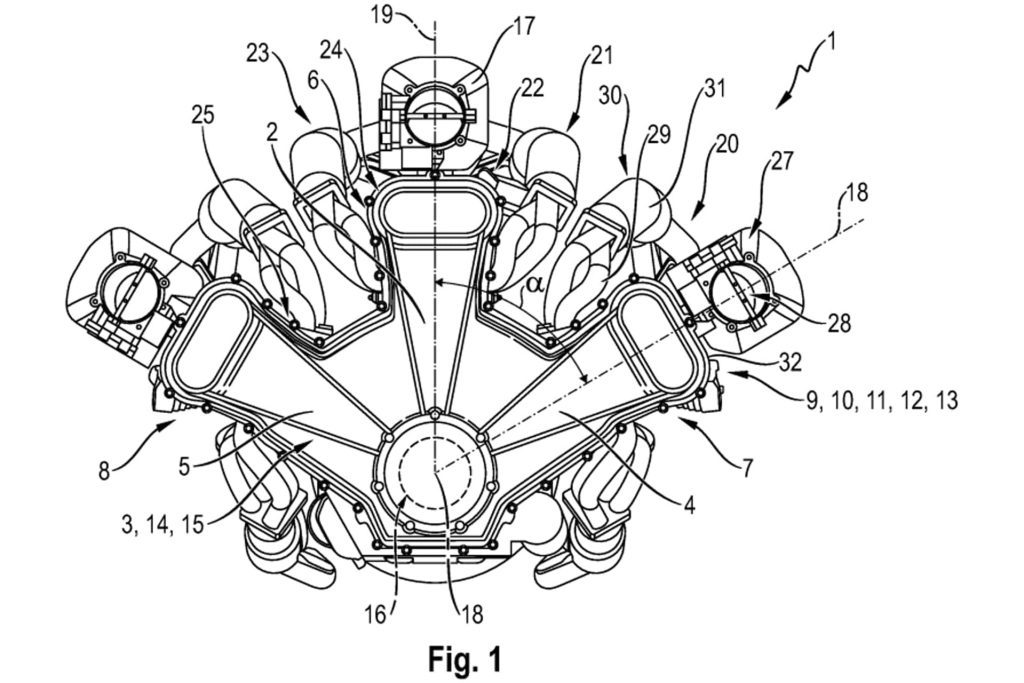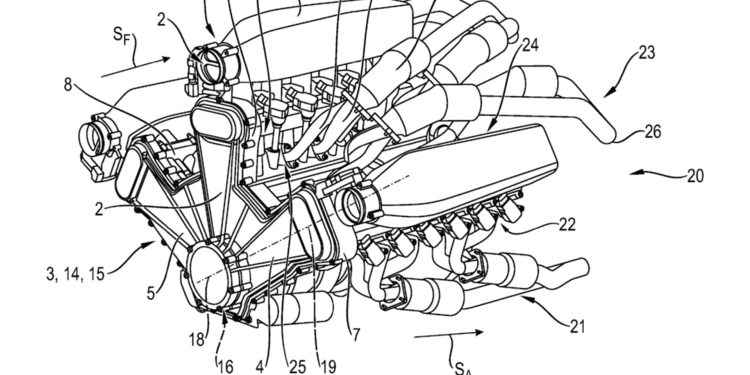Porsche patents wild W-18 engine concept
Porsche’s engineers are once again challenging convention, with a newly uncovered patent revealing a radical W-shaped combustion engine featuring up to 18 cylinders. The filing, published in Europe, outlines a compact “space-optimised” design that could be adapted for multiple applications, though it’s unclear if it will ever make production.
According to the documentation, the design consists of three banks of six cylinders arranged in a true W-layout, unlike Bugatti’s W-16, which uses two narrow V-banks on a shared crankshaft. Porsche’s setup positions each cylinder bank at distinct angles around a common crank, allowing the engine to remain remarkably short and compact despite its cylinder count.

Intriguingly, the patent notes that the configuration could support “a different number of cylinders,” meaning Porsche could, in theory, create W-9 or W-15 variants tailored to different vehicles or packaging needs.
Engineering focus on airflow and performance
The patent highlights that the W-engine’s layout allows Porsche to route exhaust gases between and beneath the cylinders, while the air intakes sit on top of each cylinder bank. This configuration, according to the translation, “minimises friction losses of the air flow” and creates a “clear separation between the air intake and the exhaust gas exhaust device … so that the fresh air to be sucked in cannot heat up via wall heat.”
Read more – 2025 Porsche 911 GT3 Review
The result, Porsche says, is cooler intake air and higher performance potential; an advantage that could prove useful for high-output combustion engines or hybrid applications. The filing even describes the potential for a turbocharger per cylinder bank, creating a triple-turbocharged W-18 engine roughly the length of a conventional straight-six.
Future project or engineering experiment?
As wild as it sounds, there’s no indication Porsche plans to build the engine. Still, Porsche’s experimentation suggests that the brand isn’t done exploring the limits of combustion technology, as it rethinks its move towards electrification.





